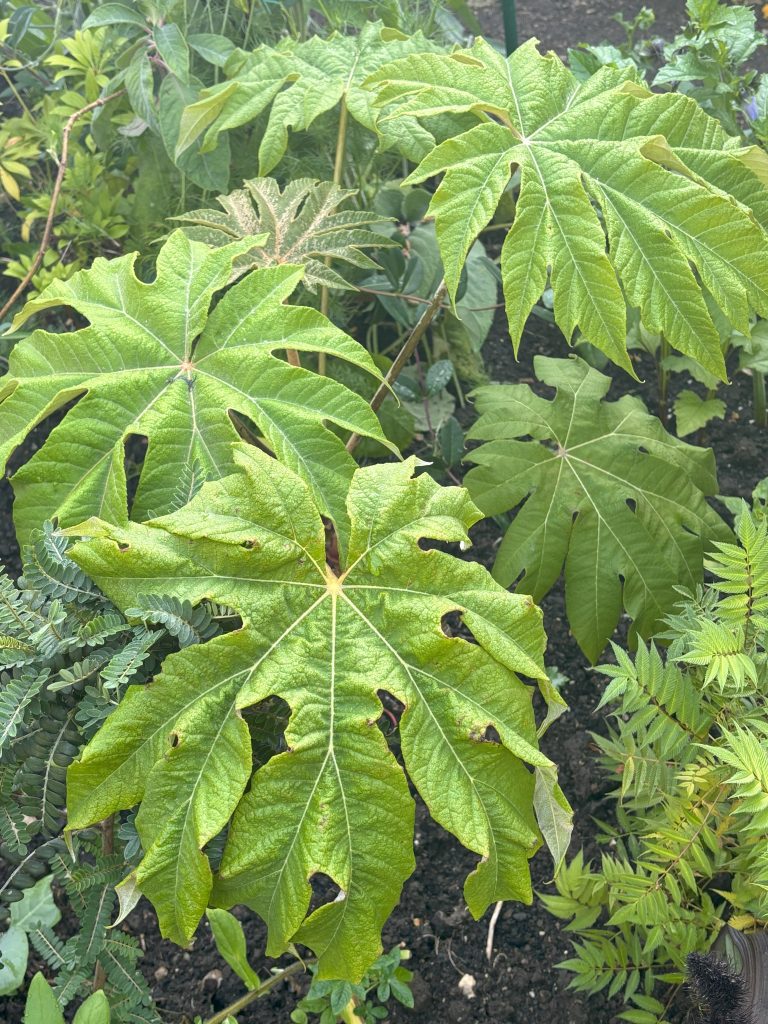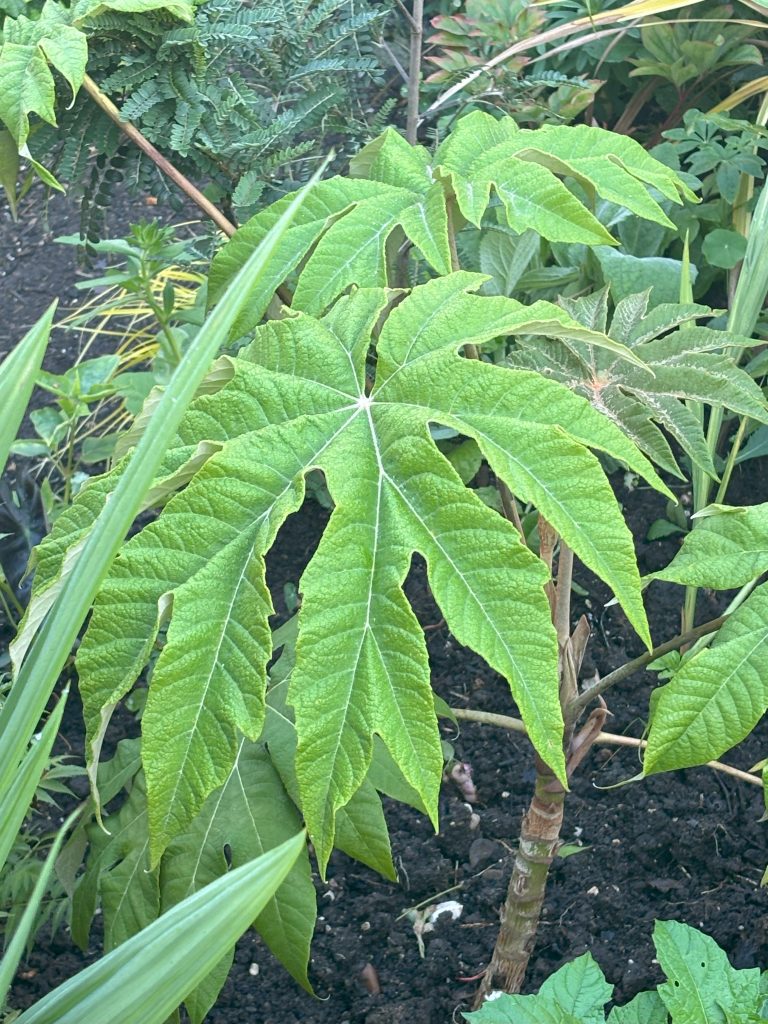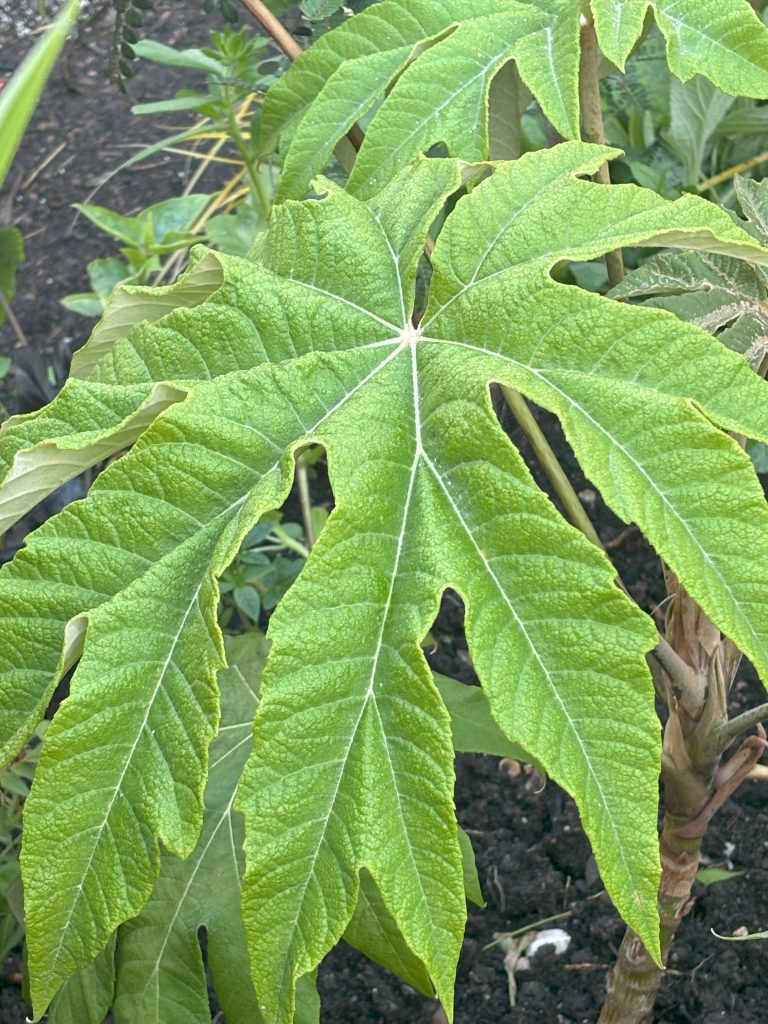Tetrapanax is a striking and exotic addition to any garden, known for its large, dramatic leaves that create a lush, tropical feel. This guide will cover everything you need to know about growing Tetrapanax in the UK, including its varieties, history, and detailed care instructions.
History of Tetrapanax
Tetrapanax is a genus of flowering plants in the Araliaceae family, native to Taiwan and southern China. The most commonly cultivated species is Tetrapanax papyrifer, also known as the rice paper plant. This name comes from its historical use in China, where its pith was used to make a type of paper.
Introduced to Western horticulture in the 19th century, Tetrapanax has since become popular in gardens around the world for its unique and imposing foliage.



Varieties of Tetrapanax
- Tetrapanax papyrifer ‘Rex’: This is the most common variety grown in the UK. It is prized for its large, deeply lobed leaves that can reach up to 1 meter across. ‘Rex’ is known for its vigor and relatively fast growth.
- Tetrapanax papyrifer ‘Steroidal Giant’: Similar to ‘Rex’, but often touted for its even more robust growth and slightly larger leaves.
- Tetrapanax papyrifer ‘Variegatus’: A rarer variety with variegated leaves featuring cream and green patterns, adding an extra visual interest to the plant.
Growing Conditions
Climate: Tetrapanax is hardy in the UK climate, particularly in milder areas. It can tolerate temperatures down to -10°C, but may suffer in prolonged cold spells.
Light: Prefers partial shade but can tolerate full sun if the soil is kept consistently moist. In very sunny spots, the leaves might need some protection from the midday sun to prevent scorching.
Soil: Thrives in well-drained, fertile soil. A mixture of garden compost and loam works well. Good drainage is essential to prevent root rot.
Watering: Keep the soil consistently moist, especially during the growing season. However, avoid waterlogging as this can lead to root diseases.
Feeding: Feed with a balanced, slow-release fertilizer in spring to promote vigorous growth.
Planting and Care
- Planting: Plant Tetrapanax in spring or early summer to give it a full growing season to establish. Dig a hole twice the size of the root ball and mix in organic compost. Place the plant at the same depth it was in the pot, backfill with soil, and water thoroughly.
- Mulching: Apply a thick layer of mulch around the base to retain moisture and regulate soil temperature. Keep the mulch away from the stem to prevent rot.
- Pruning: Little pruning is needed. Remove any dead or damaged leaves as necessary. In late winter or early spring, you can cut back older stems to encourage new growth.
- Protection: In colder regions, protect young plants with a fleece during severe frosts. Mature plants are generally hardy, but you can add extra mulch around the base in winter for added protection.
- Propagation: Tetrapanax can be propagated by root cuttings or offsets. The plant often produces suckers which can be dug up and replanted.
Pests and Diseases
Pests: Tetrapanax is relatively pest-free but can occasionally suffer from aphids, spider mites, and scale insects. Regularly check the undersides of leaves and treat with an appropriate insecticide if necessary.
Diseases: Root rot can be an issue in poorly drained soils. Ensure good drainage and avoid overwatering.
Companion Plants
Plant Tetrapanax with other tropical-looking plants such as:
- Fatsia japonica
- Bamboo
- Hostas
- Ferns
These combinations can create a lush, exotic garden oasis.
Conclusion
Tetrapanax is a dramatic and rewarding plant that can transform a garden with its bold foliage. With the right conditions and care, it can thrive in the UK, providing a touch of the tropics even in cooler climates. Whether you choose the common ‘Rex’ variety or the striking ‘Variegatus’, Tetrapanax will undoubtedly become a standout feature in your garden.
